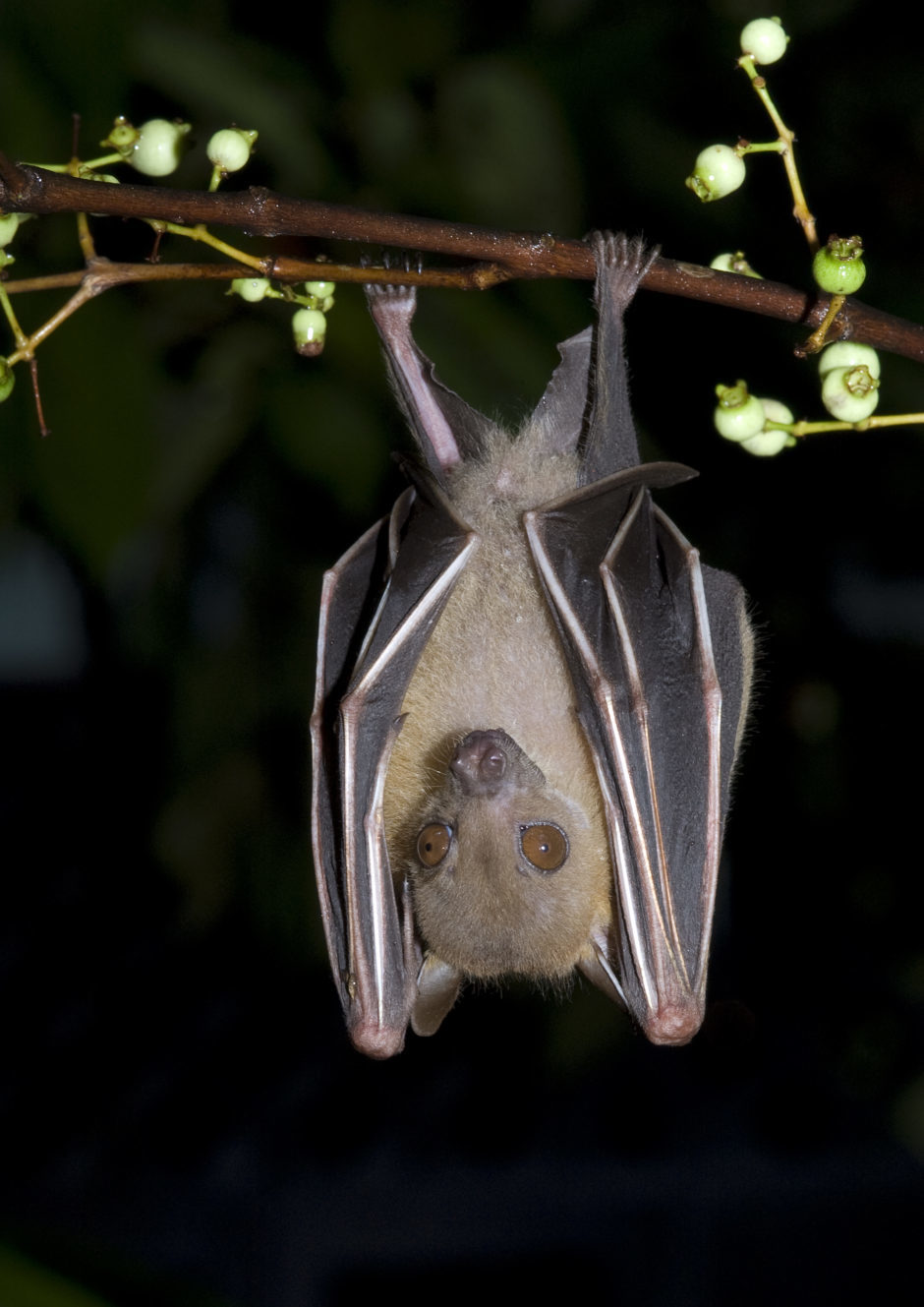
Discovering the Bats of Uganda
“I want to suck your blood!” was Count Dracula’s version of sweet-talking us in old movies. Dracula was a vampire, living off the blood of humans. He could shape-shift, changing his appearance from man to bat at his convenience. Part of the mythology of vampires holds that they must avoid sunlight, which is interesting since anything more than brief exposure to the sun does kill most bats by dehydrating them. Like the story of Dracula, scary beliefs have influenced mankind’s attitudes towards bats for ages. But are bats really so bad? Are they really here on earth to terrorize us, or do they have a useful purpose? Maybe they are just misunderstood, and as they say, we fear that which we do not understand.
Why don’t we start with the truth about one of the most misunderstood bats of all? Vampire bats are sanguivorous, meaning they feed on blood. They do this by cutting a small incision in a mammal’s skin. They usually target other animals and not humans, and their “victims” usually never know it happened. Vampire bat saliva has anesthetic properties which numb the tiny cut as the bat licks (not sucks) droplets of blood from the sleeping animal. Weighing from 15 to 50 mg., vampire bats are the size of an average mouse, and can only drink 1 or 2 ml. of blood at a time, which amounts to several drops. Worldwide there are only three species of the vampire bat. They are found in Mexico, Central America, and South America. There are no vampire bats in Africa. Even though many other creatures live on the blood of others, somehow we have managed to reserve our worst fears for bats, letting the blood-sucking ticks, fleas, mosquitoes, bed bugs, and flies, be known as itchy little nuisances. But bats! Run for your life! So vampire bats are really not that scary, but with a name like that, what can you do?
Bats have not always been villains. They are revered in Tonga as the sacred souls of departed humans. In China, Poland, Spain, and some Arab societies, bats are symbols of good luck. Then of course there’s Batman, a fictional hero with his lair in a cave who fights crime. Meanwhile, back in the real world, in Uganda, U.K., Indonesia, U.S.A., and Canada, bats are strictly protected as important wildlife species. Bats are widespread throughout Uganda. They live in cities, forests, islands, villages, parks, towns, even mountains. During the day they may hide in roofs, trees, caves, mines, or abandoned buildings, to name a few. If you think this plethora of bats is not uniquely Ugandan, you are right on.
There are around 1,100 species of bats on earth and they are found on every continent except Antarctica. 20% of earth’s mammals are bats, making them the most numerous mammal order in the world. Uganda has over 100 bat species, a healthy 9% of our planet’s total. Despite the fact that bats are often misunderstood, Ugandan primary school students scored remarkably well on a survey conducted in ten schools in Bundibugyo District. Only 6% of them thought bats are birds. Meanwhile, Burundian university students showed a much higher percentage of students who were convinced that bats are birds. It would appear that cultural and local beliefs and stories play a strong role in shaping peoples’ opinions about these animals.
The truth is, bats are important creatures with essential roles to play in nature. First of all, bats are mammals. At first glance, their teeth are similar to the teeth of a dog. Most bats have soft, dense fur, another feature of mammals. They produce milk, and unlike birds, they excrete urine and faeces from two separate ducts. Mothers give birth to one baby, which they carry on their chests where they suckle milk until they are nearly full-grown. Some bats can live for more than 20 years.
In Uganda, there are several species that are very interesting indeed:
The Yellow-winged Bat is one of the most amazing yet strange-looking creatures I have ever seen. Usually observed in the daytime as it flies or hangs in acacia trees, this bat is believed to be one of the only semi-diurnal bats anywhere. It has the largest eyes of all insectivorous bats, assisting it with navigation in darkness as well. What makes this colorful mammal so interesting to look at are its huge yellow ears and its great long leafy nose, as well as bright yellow-orange wings which are among the broadest of all bats, relative to its size. This wing shape allows for slow flight through dense, thorny acacia thickets. It eats a startling variety of insects, from beetles and butterflies to flies and mosquitoes. The yellow-winged bat is the only bat that has been observed intentionally sunning itself to warm up, as other bats avoid direct sunlight or quickly become dehydrated. Breaking free of the norm, yellow-winged bats are common in warm savannah woodlands.
Another interesting bat in Uganda is the Egyptian fruit bat. This species is well-known as a suspected vector of Marbug Virus, but if left to themselves these bats play an important part in the spread of beneficial fruit trees. They spend their days in dark places like caves, emerging in the evening to fly to trees where they eat figs and other fruits. Amazingly, when Egyptian fruit bats need a drink, they have the ability to fly over water while skimming the surface with their chest fur which soaks up water. Then they lick the water from their fur while still flying. This is a wonderful adaptation for an animal that cannot afford the energy required to take off from the ground. That may be why most bats hang from perches, so they can fall into flight with minimal effort.
Another bat in Uganda that has remarkable attributes is the long-tongued fruit bat. These relatively small bats feed on nectar from the flowers of sausage trees and African tulip trees, and in the process of their feeding, they inadvertently pollinate the trees. While they are poking their faces into flowers to lap up sweet nectar, powdery pollen from the flowers sticks to the fur on the bats’ faces and is carried to the next flower where it enters the pistil and fertilizes it. Long-tongued bats have a ridiculously long tongue that allows them to reach nectar that many other animals can’t access, earning them the title of nectar specialists. From the sausage tree and the tulip tree alone, Ugandans have derived at least 25 medicinal uses, and even some recipes for a local brew! Its role in the reproduction of these important trees makes the long-tongued bat a very beneficial neighbor to humans.
While fruit bats are large and maybe more commonly seen, less than a third of all bats are frugivorous. There are myriad smaller, less conspicuous bats out there. 70% of the world’s bats are insectivorous, and some species can eat 1,000 mosquitoes in a single hour! In certain parts of the world, bat colonies are so big they can eat unbelievable amounts of insects. A colony of 1.5 million bats was studied in North America, and it was discovered that in one night this massive swarm of flying mammals was able to catch and eat 15 tonnes of mosquitoes! Imagine what an itchy existence we humans would have if bats weren’t gobbling up so many mozzies every night.
If bats are so wonderful, you ask, then why do we vilify them? For one thing, they sometimes seem to be diving at our heads when we are outside after dark. This frightens people for obvious reasons, as it is quite startling. Why do they do that?! Well, the bat isn’t interested in you at all; it is hunting your arch-enemy, the mosquito, which is hunting you! While this explanation might suffice for some, others might be asking, “What if a hunting bat accidentally flies into me?” That is very, very unlikely, and here is why:
Bats have the amazing ability to fly around in the dark without smacking into anything. They accomplish this feat in different ways. Larger fruit bats use their big eyes to absorb even the tiniest amounts of light so they can see amazingly well on a night when you can see nothing at all. Most insectivorous bats, however, while certainly not blind, use an even more remarkable method of navigating the darkness. Sending sound waves out ahead of them using squeaks and clicks, bats can interpret these sounds as they echo or bounce off of objects. Whether a tree, a wall, a human, or even something as tiny as a mosquito, a bat can pinpoint its location without ever seeing it. This ability is called echolocation…sonar! Sending out the clicks and squeaks is easy, but collecting the echoes takes some special adaptations. This is why many bats have interesting leafy noses and big ears to help them collect returning sound waves. So no matter how dark it is or how close a bat flies to your head, relax.
Just as bats help to control insect populations around the world, bat populations are also controlled by certain predators. Many species of snakes feed on bats, as do some birds and mammals. Pythons and cobras, for example, enter caves to hunt bats. Sometimes a snake will even live in the cave among the bats. Pythons are specially equipped for hunting in pure darkness, using heat-sensing pits on their lips to find warm-blooded prey, while cobras hunt by sight and smell and tend to hunt bats that roost in slightly lighted places. The Bat Hawk is a special bird of prey that eats only bats – it is an evening hunter that snatches bats in midair as they leave their roosts.
Genets, the beautiful, furry little predators so common in Uganda, will climb trees and enter caves in search of bats to eat. Most interesting of all, there are two species of bats that hunt other bats! If you are slowly becoming a fan of bats, don’t hate these predators. The pressure they put on bat populations ensures that the fittest bats survive as the weak or less vigilant ones do not. Just when bats are starting to seem like angels, there are a few things to take note of. After all, they are wild animals, and wildlife should be given its space. Some mammals carry diseases that can sometimes be passed on to humans. Dogs, cats, mongooses, bats, and many other mammals can carry rabies. It is not recommended to handle bats as they might be frightened and try to bite you. Living with bats in your home, while maybe a good insect control method, can also have some negative results. Bats that roost in homes during the day eventually leave a build-up of feces which can dry and turn to dust containing harmful pathogens.
Bats have been misunderstood for millennia, and why not? It isn’t easy to get to know a creature that hides so well during the day and that possesses abilities that seem almost magical. I mean, no other mammal can truly fly except for us, right? And only owls, also mystically regarded worldwide, can fly around avoiding obstacles and catching tiny prey in pitch darkness. In recent years, science has been able to enlighten us about bats enough to give us the choice to appreciate bats for the amazing flying mammals they are. We need bats, just like we need bees, but we don’t keep beehives in our homes or we will be stung. Similarly, bats are important to the health and diversity of our environment, providing insect control services, pollination, and fruit tree propagation, so let’s give bats a break and let them fulfill their roles in Uganda’s rich and diverse natural places. To be continued in the April -June 2010 issue.

